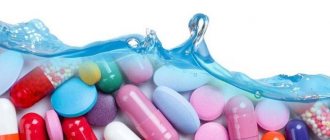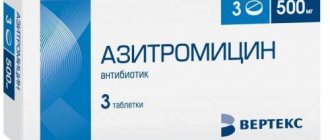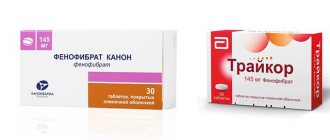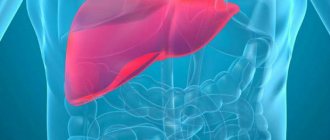Adrenergic stimulants (adrenergic agonists) are medications that stimulate different types of adrenergic receptors in organs and tissues, thereby imitating the effects of natural biologically active substances - the mediator norepinephrine and the adrenal hormone adrenaline.
Norepinephrine is a transmitter of impulses in the peripheral nervous system, regulating the functioning of many internal organs and systems (in particular, the heart, blood vessels, bronchi, uterus, pancreas, urinary system, etc.). Adrenaline is similar in structure and function to norepinephrine and is a hormone of the inner (brain) layer of the adrenal cortex.
Norepinephrine and adrenaline realize their effects through interaction with special structural components of cells - receptors, namely adrenergic receptors. Depending on their location and functions, adrenergic receptors are classified into alpha (α)- and beta (β)-adrenergic receptors.
α-Adrenergic receptors are located mainly in blood vessels, the iris of the eye, and the urinary tract. The effects of α-adrenergic receptor stimulation include constriction of blood vessels (and consequently increased blood pressure), pupil dilation, and urinary retention.
β-Adrenergic receptors are localized primarily in the heart (β1-adrenergic receptors), as well as in the bronchi and uterus (β2-adrenergic receptors). When they are stimulated, an increase in the strength and frequency of heart contractions, dilation of the bronchi and relaxation of the uterus are observed.
There is a separate class of drugs that can stimulate adrenergic receptors (adrenergic agonists, adrenergic stimulants), and a group of drugs that can block adrenergic receptors (adrenergic blockers, adrenergic steroids).
Depending on the degree of selectivity, adrenergic stimulants are divided into α-adrenergic agonists, β-adrenergic agonists, as well as α- and β-adrenergic agonists. Let us consider in detail drugs that stimulate β-adrenergic receptors.
Indications for use
β1-adrenergic agonists are used for acute heart failure associated with low cardiac output - against the background of myocardial infarction, cardiomyopathies, cardiogenic shock, and during heart surgery.
β2-adrenergic agonists are used for diseases associated with bronchospasm - bronchial asthma, chronic obstructive pulmonary disease.
Also, β2-adrenergic agonists are prescribed when there is a threat of premature birth.
β3-adrenergic agonists are used for diseases associated with increased bladder tone - overactive bladder syndrome: urinary incontinence, frequent urination.
pharmachologic effect
β1-Adrenergic agonists stimulate β1-adrenergic receptors in the myocardium, which leads to an increase in the strength and frequency of heart contractions (and, as a consequence, cardiac output and blood pressure).
β2-Adrenergic agonists stimulate β2-adrenergic receptors in the bronchi, providing a bronchodilator (bronchodilator) effect, and also, due to stimulation of β2-adrenergic receptors of the uterus, have a tocolytic effect (relax the muscles of the uterus).
β3-Adrenergic agonists stimulate β3-adrenergic receptors in the bladder, relaxing its muscles and preventing urinary incontinence.
Alpha adrenergic agonists
Alpha adrenergic agonists are represented by drugs that act mainly on alpha adrenergic receptors, and they can be selective (only on one type) and non-selective (acting on both α1 and α2 molecules). Norepinephrine, which also stimulates beta receptors, is considered a non-selective drug.
Selective alpha1-adrenergic agonists include mezatone, etilephrine, and midodrine. Drugs in this group have a good anti-shock effect by increasing vascular tone and spasm of small arteries, therefore they are prescribed for severe hypotension and shock. Their local use is accompanied by vasoconstriction; they can be effective in the treatment of allergic rhinitis and glaucoma.
Drugs that excite alpha2 receptors are more common due to the possibility of predominantly local use. The most famous representatives of this class of adrenergic agonists are naphthyzine, galazolin, xylometazoline, and visine. These drugs are widely used to treat acute inflammatory processes of the nose and eyes. Indications for their use include allergic and infectious rhinitis, sinusitis, and conjunctivitis.
Due to the rapid onset of the effect and the availability of these drugs, they are very popular as medicines that can quickly relieve such an unpleasant symptom as nasal congestion. However, you should be careful when using them, because with excessive and prolonged use of such drops, not only drug resistance develops, but also atrophic changes in the mucosa, which can be irreversible.
The possibility of local reactions in the form of irritation and atrophy of the mucous membrane, as well as systemic effects (increased pressure, changes in heart rhythm) does not allow their long-term use, and they are also contraindicated for infants, people with hypertension, glaucoma, and diabetes. It is clear that both hypertensive and diabetic patients still use the same nasal drops as everyone else, but they should be very careful. Special products are produced for children that contain a safe dose of adrenergic agonists, and mothers must ensure that the child does not get an excess amount of them.
Selective centrally acting alpha2-adrenergic agonists not only have a systemic effect on the body, they can pass through the blood-brain barrier and activate adrenergic receptors directly in the brain. Their main effects are:
- Reduce blood pressure and heart rate;
- Normalizes heart rate;
- They have a sedative and pronounced analgesic effect;
- Reduce the secretion of saliva and tear fluid;
- Reduce the secretion of water in the small intestine.
Methyldopa, clonidine, guanfacine, catapresan, and dopegit are widely used and are used in the treatment of arterial hypertension. Their ability to reduce salivary secretion, provide an anesthetic effect and soothe allows them to be used as additional drugs during anesthesia and as anesthetics during spinal anesthesia.
Basics of treatment with β-adrenergic agonists
β-Adrenergic stimulants are classified as prescription drugs - drugs are dispensed from pharmacies only with a doctor's prescription.
The β1-adrenergic agonist dobutamine is administered intravenously in a hospital setting under the constant supervision of a physician. The effect of the drug develops after 1-2 minutes, the maximum effect is observed after 10 minutes.
For the treatment of bronchial asthma and chronic obstructive pulmonary disease, β2-adrenergic agonists are used by inhalation.
To prevent premature birth, β2-agonists are used as intravenous injections, infusions, or taken orally (orally) as tablets.
Mirabegron is used orally in tablet form once a day.
III generation beta-blockers in the treatment of cardiovascular diseases
Modern cardiology cannot be imagined without drugs from the beta-blocker group, of which more than 30 names are currently known. The need to include beta-blockers in the treatment program for cardiovascular diseases (CVD) is obvious: over the past 50 years of cardiac clinical practice, beta-blockers have taken a strong position in the prevention of complications and in the pharmacotherapy of arterial hypertension (AH), coronary heart disease (CHD), chronic heart failure (CHF), metabolic syndrome (MS), as well as some forms of tachyarrhythmias. Traditionally, in uncomplicated cases, drug treatment of hypertension begins with beta-blockers and diuretics, which reduce the risk of myocardial infarction (MI), cerebrovascular accident and sudden cardiogenic death.
The concept of the indirect action of drugs through tissue receptors of various organs was proposed by N. Langly in 1905, and in 1906 H. Dale confirmed it in practice.
In the 90s, it was established that beta-adrenergic receptors are divided into three subtypes:
- beta1-adrenergic receptors, which are located in the heart and through which the stimulating effects of catecholamines on the activity of the heart - pump are mediated: increased sinus rhythm, improved intracardiac conduction, increased myocardial excitability, increased myocardial contractility (positive chrono-, dromo-, batmo-, inotropic effects) ;
- beta2-adrenergic receptors, which are located mainly in the bronchi, smooth muscle cells of the vascular wall, skeletal muscles, and in the pancreas; when they are stimulated, broncho- and vasodilatory effects, relaxation of smooth muscles and insulin secretion are realized;
- beta3-adrenergic receptors, localized primarily on adipocyte membranes, are involved in thermogenesis and lipolysis. The idea of using beta-blockers as cardioprotectors belongs to the Englishman J.?W.?Black, who in 1988, together with his collaborators, the creators of beta-blockers, was awarded the Nobel Prize. The Nobel Committee considered the clinical significance of these drugs to be “the greatest breakthrough in the fight against heart disease since the discovery of digitalis 200 years ago.”
The ability to block the effect of mediators on beta1-adrenergic receptors of the myocardium and the weakening of the effect of catecholamines on membrane adenylate cyclase of cardiomyocytes with a decrease in the formation of cyclic adenosine monophosphate (cAMP) determine the main cardiotherapeutic effects of beta-blockers.
The anti-ischemic effect of beta-blockers is explained by a decrease in myocardial oxygen demand due to a decrease in heart rate (HR) and the force of heart contractions that occur when beta-adrenergic receptors of the myocardium are blocked.
Beta blockers simultaneously improve myocardial perfusion by reducing left ventricular (LV) end-diastolic pressure and increasing the pressure gradient that determines coronary perfusion during diastole, the duration of which increases as a result of a slower cardiac rhythm.
Antiarrhythmic action of beta-blockers , based on their ability to reduce the adrenergic effect on the heart, leads to:
- decrease in heart rate (negative chronotropic effect);
- decreased automaticity of the sinus node, AV connection and the His–Purkinje system (negative bathmotropic effect);
- reducing the duration of the action potential and the refractory period in the His–Purkinje system (the QT interval is shortened);
- slowing down conduction in the AV junction and increasing the duration of the effective refractory period of the AV junction, lengthening the PQ interval (negative dromotropic effect).
Beta-blockers increase the threshold for the occurrence of ventricular fibrillation in patients with acute MI and can be considered as a means of preventing fatal arrhythmias in the acute period of MI.
The hypotensive effect of beta-blockers is due to:
- a decrease in the frequency and strength of heart contractions (negative chrono- and inotropic effects), which overall leads to a decrease in cardiac output (MCO);
- decreased secretion and decreased concentration of renin in plasma;
- restructuring of the baroreceptor mechanisms of the aortic arch and carotid sinus;
- central depression of sympathetic tone;
- blockade of postsynaptic peripheral beta-adrenergic receptors in the venous vascular bed, with a decrease in blood flow to the right side of the heart and a decrease in MOS;
- competitive antagonism with catecholamines for receptor binding;
- increased levels of prostaglandins in the blood.
Drugs from the group of beta-blockers differ in the presence or absence of cardioselectivity, intrinsic sympathetic activity, membrane-stabilizing, vasodilating properties, solubility in lipids and water, effect on platelet aggregation, and also in duration of action.
The effect on beta2-adrenergic receptors determines a significant part of the side effects and contraindications to their use (bronchospasm, constriction of peripheral vessels). A feature of cardioselective beta-blockers compared to non-selective ones is their greater affinity for beta1-receptors of the heart than for beta2-adrenergic receptors. Therefore, when used in small and medium doses, these drugs have a less pronounced effect on the smooth muscles of the bronchi and peripheral arteries. It should be taken into account that the degree of cardioselectivity varies among different drugs. The index ci/beta1 to ci/beta2, characterizing the degree of cardioselectivity, is 1.8:1 for non-selective propranolol, 1:35 for atenolol and betaxolol, 1:20 for metoprolol, 1:75 for bisoprolol (Bisogamma). However, it should be remembered that selectivity is dose-dependent; it decreases with increasing drug dose (Fig. 1).
Currently, clinicians identify three generations of drugs with a beta-blocking effect.
I generation - non-selective beta1- and beta2-adrenergic blockers (propranolol, nadolol), which, along with negative ino-, chrono- and dromotropic effects, have the ability to increase the tone of the smooth muscles of the bronchi, vascular wall, and myometrium, which significantly limits their use in clinical practice.
II generation - cardioselective beta1-adrenergic blockers (metoprolol, bisoprolol), due to their high selectivity for myocardial beta1-adrenergic receptors, have more favorable tolerability with long-term use and a convincing evidence base for long-term life prognosis in the treatment of hypertension, coronary artery disease and heart failure.
In the mid-1980s, third-generation beta-blockers with low selectivity to beta1, 2-adrenergic receptors, but with combined blockade of alpha-adrenergic receptors, appeared on the global pharmaceutical market.
III generation drugs - celiprolol, bucindolol, carvedilol (its generic analogue with the brand name Carvedigamma®) have additional vasodilating properties due to the blockade of alpha-adrenergic receptors, without internal sympathomimetic activity.
In 1982–1983, the first reports of clinical experience with the use of carvedilol in the treatment of CVD appeared in the scientific medical literature.
A number of authors have revealed the protective effect of third-generation beta-blockers on cell membranes. This is explained, firstly, by inhibition of the processes of lipid peroxidation (LPO) of membranes and the antioxidant effect of beta blockers and, secondly, by a decrease in the effect of catecholamines on beta receptors. Some authors associate the membrane-stabilizing effect of beta-blockers with a change in sodium conductivity through them and inhibition of lipid peroxidation.
These additional properties expand the prospects for the use of these drugs, since they neutralize the negative effect on myocardial contractile function, carbohydrate and lipid metabolism characteristic of the first two generations, and at the same time provide improved tissue perfusion, a positive effect on hemostasis and the level of oxidative processes in the body.
Carvedilol is metabolized in the liver (glucuronidation and sulfation) by the cytochrome P450 enzyme system, using the CYP2D6 and CYP2C9 enzyme families. The antioxidant effect of carvedilol and its metabolites is due to the presence of a carbazole group in the molecules (Fig. 2).
Metabolites of carvedilol - SB 211475, SB 209995 inhibit LPO 40-100 times more actively than the drug itself, and vitamin E - about 1000 times.
Use of carvedilol (Carvedigamma®) in the treatment of coronary artery disease
According to the results of a number of completed multicenter studies, beta-blockers have a pronounced anti-ischemic effect. It should be noted that the anti-ischemic activity of beta-blockers is comparable to the activity of calcium antagonists and nitrates, but, unlike these groups, beta-blockers not only improve the quality of life, but also increase the life expectancy of patients with coronary artery disease. According to the results of a meta-analysis of 27 multicenter studies, which involved more than 27 thousand people, selective beta-blockers without intrinsic sympathomimetic activity in patients with a history of acute coronary syndrome reduce the risk of recurrent myocardial infarction and mortality from heart attack by 20% [1].
However, not only selective beta-blockers have a positive effect on the course and prognosis of patients with coronary artery disease. The non-selective beta blocker carvedilol has also demonstrated very good efficacy in patients with stable angina. The high anti-ischemic effectiveness of this drug is explained by the presence of additional alpha1-blocking activity, which promotes dilatation of coronary vessels and collaterals of the poststenotic region, and therefore improves myocardial perfusion. In addition, carvedilol has a proven antioxidant effect associated with the capture of free radicals released during ischemia, which determines its additional cardioprotective effect. At the same time, carvedilol blocks apoptosis (programmed death) of cardiomyocytes in the ischemic zone, maintaining the volume of functioning myocardium. The metabolite of carvedilol (BM 910228) has been shown to have less beta-blocking effect, but is an active antioxidant, blocking lipid peroxidation by “scavenging” active free radicals OH–. This derivative preserves the inotropic response of cardiomyocytes to Ca++, the intracellular concentration of which in the cardiomyocyte is regulated by the Ca++ pump of the sarcoplasmic reticulum. Therefore, carvedilol appears to be more effective in the treatment of myocardial ischemia through inhibition of the damaging effects of free radicals on the membrane lipids of the subcellular structures of cardiomyocytes [2].
Due to these unique pharmacological properties, carvedilol may be superior to traditional beta1-selective blockers in improving myocardial perfusion and helping to preserve systolic function in patients with coronary artery disease. As shown by Das Gupta et al., in patients with LV dysfunction and heart failure resulting from coronary artery disease, monotherapy with carvedilol reduced filling pressure and also increased LV ejection fraction (EF) and improved hemodynamic parameters, without being accompanied by the development of bradycardia [3] .
According to the results of clinical studies in patients with chronic stable angina, carvedilol reduces heart rate at rest and during exercise, and also increases EF at rest. A comparative study of carvedilol and verapamil, which involved 313 patients, showed that, compared with verapamil, carvedilol reduced heart rate, systolic blood pressure and the heart rate ´ blood pressure product to a greater extent at maximum tolerated physical activity. Moreover, carvedilol has a more favorable tolerability profile [4]. Importantly, carvedilol appears to be more effective in treating angina than conventional beta1-blockers. Thus, in a 3-month randomized, multicenter, double-blind study, carvedilol was directly compared with metoprolol in 364 patients with stable chronic angina. They took carvedilol 25–50 mg twice daily or metoprolol 50–100 mg twice daily [5]. While both drugs demonstrated good antianginal and antiischemic effects, carvedilol more significantly increased the time to 1 mm ST segment depression during exercise than metoprolol. Carvedilol was very well tolerated and, importantly, there was no noticeable change in the types of adverse events with increasing doses of carvedilol.
It is noteworthy that carvedilol, which, unlike other beta-blockers, does not have a cardiodepressive effect, improves the quality and life expectancy of patients with acute myocardial infarction (CHAPS) [6] and post-infarction ischemic dysfunction of the LV (CAPRICORN) [7]. Promising data were obtained from the Carvedilol Heart Attack Pilot Study (CHAPS), a pilot study examining the effects of carvedilol on the development of myocardial infarction. This was the first randomized trial to compare carvedilol with placebo in 151 patients following acute MI. Treatment was started within 24 hours of the onset of chest pain, and the dose was increased to 25 mg twice daily. The primary endpoints of the study were LV function and drug safety. Patients were observed for 6 months from the onset of the disease. According to the data obtained, the incidence of serious cardiac events decreased by 49%.
Sonographic data from 49 patients with reduced LVEF (<45%) from the CHAPS study showed that carvedilol significantly improved recovery of LV function after acute MI, both at 7 days and at 3 months. When treated with carvedilol, LV mass significantly decreased, while in patients taking placebo it increased (p = 0.02). LV wall thickness also decreased significantly (p = 0.01). Carvedilol contributed to the preservation of LV geometry, preventing changes in the sphericity index, echographic global remodeling index and LV size. It should be emphasized that these results were obtained with carvedilol monotherapy. In addition, studies with thallium-201 in the same group of patients showed that only carvedilol significantly reduced the incidence of events in the presence of signs of reversible ischemia. The data collected during the studies described above convincingly prove the presence of clear advantages of carvedilol over traditional beta-blockers, which is due to its pharmacological properties.
The good tolerability and anti-remodeling effect of carvedilol indicate that this drug can reduce the risk of death in patients who have had a myocardial infarction. The large-scale CAPRICORN (CArvedilol Post InfaRct Survival CONtRol in Left Ventricular DysfunctionN) trial was designed to study the effect of carvedilol on survival in LV dysfunction after myocardial infarction. The CAPRICORN trial demonstrates for the first time that carvedilol in combination with ACE inhibitors is able to reduce all-cause and cardiovascular mortality, as well as the incidence of recurrent non-fatal myocardial infarction in this group of patients. New evidence that carvedilol is at least as effective, if not more effective, in reversing remodeling in patients with heart failure and coronary artery disease supports the need for earlier administration of carvedilol for myocardial ischemia. In addition, the effect of the drug on the “sleeping” (hibernating) myocardium deserves special attention [8].
Thus, all these data allow us to recommend the use of carvedilol for the treatment of patients with coronary artery disease.
Carvedilol in the treatment of hypertension
The leading role of impaired neurohumoral regulation in the pathogenesis of hypertension today is beyond doubt. Both main pathogenetic mechanisms of hypertension - increased cardiac output and increased peripheral vascular resistance - are controlled by the sympathetic nervous system. Therefore, beta blockers and diuretics have been the standard of care for antihypertensive therapy for many years.
In the JNC-VI recommendations, beta-blockers were considered as first-line drugs for uncomplicated forms of hypertension, since only beta-blockers and diuretics were proven in controlled clinical trials to reduce cardiovascular morbidity and mortality [9, 10]. According to the results of a meta-analysis of previous multicenter studies, beta-blockers did not live up to expectations regarding the effectiveness of reducing the risk of stroke. Negative metabolic effects and peculiarities of influence on hemodynamics did not allow them to take a leading place in the process of reducing myocardial and vascular remodeling [11]. However, it should be noted that the studies included in the meta-analysis concerned only representatives of the second generation of beta-blockers - atenolol, metoprolol and did not include data on new drugs of the class. With the advent of new representatives of this group, the danger of their use in patients with cardiac conduction disorders, diabetes mellitus, lipid metabolism disorders, and renal pathology was largely neutralized. The use of these drugs allows us to expand the scope of beta-blockers for hypertension.
Among all representatives of the class of beta-blockers, the most promising in the treatment of patients with hypertension are drugs with vasodilating properties, one of which is carvedilol.
Carvedilol has a long-term hypotensive effect. According to the results of a meta-analysis of the hypotensive effect of carvedilol in more than 2.5 thousand patients with hypertension, blood pressure decreases after a single dose of the drug, but the maximum hypotensive effect develops after 1–2 weeks [12]. The same study provides data on the effectiveness of the drug in different age groups: no significant differences in blood pressure levels were found during a 4-week intake of carvedilol at a dose of 25 or 50 mg in people under or over 60 years of age.
An important fact is that, unlike non-selective and some beta1-selective adrenergic blockers, beta blockers with vasodilating activity not only do not reduce tissue sensitivity to insulin, but even slightly enhance it [13]. Carvedilol's ability to reduce insulin resistance is an effect that is largely due to beta1-adrenergic blocking activity, which increases lipoprotein lipase activity in muscle, which in turn increases lipid clearance and improves peripheral perfusion, which promotes more active glucose uptake into tissues. Comparison of the effects of different beta blockers supports this concept. Thus, in a randomized study, carvedilol and atenolol were prescribed to patients with type 2 diabetes mellitus and hypertension [14]. It was shown that after 24 weeks of therapy, fasting blood glucose and insulin levels decreased with carvedilol treatment and increased with atenolol treatment. In addition, carvedilol had a greater positive effect on insulin sensitivity (p = 0.02), high-density lipoprotein (HDL) levels (p = 0.04), triglycerides (p = 0.01) and lipid peroxidation (p = 0.04).
As is known, dyslipidemia is one of the four main risk factors for the development of CVD. Its combination with hypertension is especially unfavorable. However, taking some beta-blockers can also lead to undesirable changes in blood lipid levels [15]. As already mentioned, carvedilol does not have a negative effect on serum lipid levels [14]. A multicenter, blinded, randomized study examined the effect of carvedilol on the lipid profile in patients with mild to moderate hypertension and dyslipoproteinemia [16]. The study included 250 patients who were randomized to treatment groups with carvedilol at a dose of 25–50 mg/day or the ACE inhibitor captopril at a dose of 25–50 mg/day. The choice of captopril for comparison was determined by the fact that it either has no effect or has a positive effect on lipid metabolism. The duration of treatment was 6 months. In both compared groups, positive dynamics were noted: both drugs comparablely improved the lipid profile. The beneficial effect of carvedilol on lipid metabolism is most likely related to its alpha-adrenergic blocking activity, since beta1-adrenergic receptor blockade has been shown to cause vasodilation, thereby improving hemodynamics and also reducing the severity of dyslipidemia [17].
In addition to blocking beta1, beta2 and alpha1 receptors, carvedilol also has additional antioxidant and antiproliferative properties [18, 19], which is important to consider in terms of influencing CVD risk factors and providing target organ protection in patients with hypertension.
Thus, the metabolic neutrality of the drug allows its widespread use in patients with hypertension and diabetes mellitus, as well as in patients with MS, which is especially important in the treatment of elderly people [20].
The alpha-blocking and antioxidant effects of carvedilol, which provide peripheral and coronary vasodilation, contribute to the effect of the drug on the parameters of central and peripheral hemodynamics; the positive effect of the drug on the ejection fraction and stroke volume of the left ventricle has been proven, which is especially important in the treatment of hypertensive patients with ischemic and non-ischemic heart failure [ 21].
As is known, hypertension is often combined with kidney damage, and when choosing antihypertensive therapy, it is necessary to take into account the possible adverse effects of the drug on the functional state of the kidneys. The use of beta-blockers in most cases can be associated with a decrease in renal blood flow and glomerular filtration rate. Carvedilol's beta-blocking effect and vasodilation have been shown to have a positive effect on renal function [22, 23].
Thus, carvedilol combines beta-blocking and vasodilatory properties, which ensures its effectiveness in the treatment of hypertension.
Beta-blockers in the treatment of CHF
CHF is one of the most unfavorable pathological conditions that significantly worsens the quality and life expectancy of patients. The prevalence of heart failure is very high, it is the most common diagnosis in patients over 65 years of age. Currently, there is a steady upward trend in the number of patients with CHF, which is associated with increased survival in other CVDs, primarily in acute forms of IHD. According to WHO, the 5-year survival rate of patients with CHF does not exceed 30–50%. In the group of patients who have had a myocardial infarction, up to 50% die within the first year after the development of circulatory failure associated with a coronary event. Therefore, the most important task of optimizing therapy for CHF is the search for drugs that increase the life expectancy of patients with CHF.
Beta-blockers are recognized as one of the most promising classes of drugs effective both for preventing the development and for treating CHF [6, 24], since activation of the sympathoadrenal system is one of the leading pathogenetic mechanisms for the development of CHF. Compensatory, at the initial stages of the disease, hypersympathicotonia subsequently becomes the main cause of myocardial remodeling, increased trigger activity of cardiomyocytes, increased peripheral vascular resistance and impaired perfusion of target organs.
The history of the use of beta-blockers in the treatment of patients with CHF goes back 25 years [25]. Large-scale international studies CIBIS-II, MERIT-HF, US Carvedilol Heart Failure Trials Program, COPERNICUS approved beta-blockers as first-line drugs for the treatment of patients with CHF [26, 27, 28], confirming their safety and effectiveness in the treatment of such patients (.). A meta-analysis of the results of major studies studying the effectiveness of beta-blockers in patients with CHF showed that the addition of beta-blockers to ACE inhibitors, along with improvement of hemodynamic parameters and well-being of patients, helps to improve the course of CHF, quality of life indicators, and reduces the frequency of hospitalization - by 41 % and the risk of death in patients with CHF by 37% [29].
According to the 2005 European guidelines, the use of beta-blockers is recommended in all patients with CHF in addition to therapy with ACE inhibitors and symptomatic treatment [30]. Moreover, according to the results of the multicenter COMET study, which was the first direct comparative test of the effect of carvedilol and the second-generation selective beta-blocker metoprolol in doses providing an equivalent antiadrenergic effect on survival with an average follow-up of 58 months, carvedilol was 17% more effective than metoprolol in reducing the risk of death [ 20].
This provided an average gain in life expectancy of 1.4 years in the carvedilol group with a maximum follow-up of 7 years. This advantage of carvedilol is due to the lack of cardioselectivity and the presence of an alpha-blocking effect, which helps to reduce the hypertrophic response of the myocardium to norepinephrine, reduce peripheral vascular resistance, and suppress the production of renin by the kidneys. In addition, in clinical trials in patients with CHF, the antioxidant, anti-inflammatory (decrease in the levels of TNF-alpha (tumor necrosis factor), interleukins 6–8, C-peptide), antiproliferative and antiapoptotic effects of the drug have been proven, which also determines its significant advantages in treatment of this contingent of patients not only among drugs from their own group, but also from other groups [27].
In Fig. Figure 3 shows a scheme for titrating doses of carvedilol for various pathologies of the cardiovascular system.
Thus, carvedilol, having a beta- and alpha-adrenergic blocking effect with antioxidant, anti-inflammatory, antapoptic activity, is among the most effective drugs from the class of beta-blockers currently used in the treatment of CVD and MS.
Literature
- Devereaux P.?J., Scott Beattie W., Choi P.?TL, Badner N.?H., Guyatt G.?H., Villar J.?C. et al. How strong is the evidence for the use of perioperative b-blockers in non-cardiac surgery? Systematic review and meta-analysis of randomized controlled trials // BMJ. 2005; 331:313–321.
- Feuerstein R., Yue T.?L. A potent antioxidant, SB209995, inhibits oxy gene-radical-mediated lipid peroxidation and cytotoxicity // Pharmacology. 1994; 48: 385–91.
- Das Gupta P., Broadhurst P., Raftery E.?B. et al. Value of carvedilol in congestive heart failure secondary to coronary artery disease // Am J Cardiol. 1990; 66:1118–1123.
- Hauf-Zachariou U., Blackwood R.?A., Gunawardena K.?A. et al. Carvedilol versus verapamil in chronic stable angina: a multicentre trial // Eur J Clin Pharmacol. 1997; 52:95–100.
- Van der Does R., Hauf-Zachariou U., Pfarr E. et al. Comparison of safety and efficacy of carvedilol and metoprolol in stable angina pectoris // Am J Cardiol 1999; 83:643–649.
- Maggioni A. Review of the new ESC quidelines for the pharmacological management of chronic heart failure // Eur. Heart J. 2005; 7:J15–J21.
- Dargie H.?J. Effect of carvedilol on outcome after myocardial infarction in patients with left-ventricular dysfunction: the CAPRICORN randomized trial // Lancet. 2001; 357:1385–1390.
- Khattar R.?S., Senior R., Soman P. et al. Regression of left ventricular remodeling in chronic heart failure: Comparative and combined effects of captopril and carvedilol // Am Heart J. 2001; 142:704–713.
- Dahlof B., Lindholm L., Hansson L. et al. Morbility and mortality in the Swedish Trial in Old Patients with Hypertension (STOP-hypertension) // The Lancet, 1991; 338:1281–1285.
- Rangno R.?E., Langlois S., Lutterodt A. Metoprolol withdrawal phenomena: mechanism and prevention // Clin. Pharmacol. Ther. 1982; 31:8–15.
- Lindholm L., Carlsberg B., Samuelsson O. Shouted b-blockers remain first choice in the treatment of primary hypertension? A meta-analysis // Lancet. 2005; 366:1545–1553.
- Steinen U. The once-daily dose regimen of carvedilol: a meta-analysis approach //J Cardiovasc Pharmacol. 1992; 19(Suppl. 1):S128–S133.
- Jacob S. et al. Antihypertensive therapy and insulin sensitivity: do we have to redefine the role of beta-blocking agents? // Am J Hypertens. 1998.
- Giugliano D. et al. Metabolic and cardiovascular effects of carvedilol and atenolol in non-insulin-dependent diabetes mellitus and hypertention. A randomized, controlled trial // Ann Intern Med. 1997; 126:955–959.
- Kannel W.?B. et al. Initial drug therapy for hypertensive patients with dyslipidaemia // Am Heart J. 188: 1012–1021.
- Hauf-Zahariou U. et al. A double-blind comparison of the effects of carvedilol and captopril on serum lipid concentration in patients with mild to moderate essential hypertention and dislipidaemia // Eur J Clin Pharmacol. 1993; 45:95–100.
- Fajaro N. et al. Long-term alfa 1-adrenergic blockade attenuates diet-induced dyslipidaemia and hyperinsulinemia in the rat // J Cardiovasc Pharmacol. 1998; 32:913–919.
- Yue T.?L. et al. SB 211475, a metabolite of carvedilol, a novel antihypertensive agent, is a potent antioxidant // Eur J Pharmacol. 1994; 251:237–243.
- Ohlsten E.?H. et al. Carvedilol, a cardiovascular drug, prevents vascular smooth muscle cell proliferation, migration and neointimal formation following vascular injury // Proc Natl Acad Sci USA. 1993; 90:6189–6193.
- Poole-Wilson P.?A. et al. Comparison of carvedilol and metoprolol on clinical outcomes in patients with chronic heart failure in the carvedilol or metoprolol European trial (COMET): randomized controlled trial // Lancet. 2003; 362(9377):7–13.
- ner G. Vasodilatory action of carvedilol //J Cardiovasc Pharmacol. 1992; 19(Suppl. 1):S5–S11.
- Agrawal B. et al. Effect of antihypertensive treatment on qualitative assessments of microalbuminuria // J Hum Hypertens. 1996; 10: 551–555.
- Marchi F. et al. Efficacy of carvedilol in mild to moderate essential hypertention and effects on microalbuminuria: multicenter, randomized.
- Tendera M. Epidemiology, treatment and quidelines for the treatment of heart failure in Europe // Eur. Heart J., 2005; 7: J5–J10.
- Waagstein F., Caidahl K., Wallentin I. et al. Long-term beta-blockade in dilated cardiomyopathy: effects of short-term and long-term metoprolol followed by withdrawal and readministration of metoprolol // Circulation 1989; 80:551–563.
- The International Steering Commitee on behalf of the MERIT-HF Studi Group // Am. J. Cardiol., 1997; 80 (suppl. 9 B): 54J–548J.
- Packer M., Bristow M.?R., Cohn J.?N. et al. The effect of carvedilol on morbidity and mortality in patients with chronic heart failure. US Carvedilol Heart Failure Study Group // N Engl J Med. 1996; 334:1349.
- COPERNICUS investigators resource. F.?Hoffman-La Roche Ltd, Basel, Switzerland, 2000.
- Does R., Hauf-Zachariou U., Praff E. et al. Comparison of safety and efficacy of carvedilol and metoprolol in stable angina pectoris // Am. J.?Cardiol. 1999; 83:643–649.
- Randomized, pacebo-controlled trial of carvedilol in patients with congestive heart failure due to ischemic heart disease. Australia/New Zealand Heart Failure Research CollaborativeGroup // Lancet, 1997; 349:375–380.
A. M. Shilov *, Doctor of Medical Sciences, Professor M. V. Melnik *, Doctor of Medical Sciences, Professor A. Sh. Avshalumov **
* MMA named after. I. M. Sechenova, Moscow ** Clinic of the Moscow Institute of Cybernetic Medicine, Moscow
Contact information for authors for correspondence
Features of treatment with β-adrenergic agonists
Salbutamol and fenoterol have a rapid (the effect develops within 1-3 minutes) but short-lived (3-6 hours) effect, so they are used to relieve (eliminate) attacks of bronchial asthma.
Salmeterol and formoterol have a long-lasting effect - more than 12 hours; in addition, the effect of these drugs does not develop immediately, but only 30 minutes after use. That is why salmeterol and formoterol are used to prevent the development of bronchospasms.
In the long-term treatment of bronchial asthma and chronic obstructive pulmonary disease, combination drugs are used, which include both β2-adrenergic agonists and M-cholinergic blockers (ipratropium bromide, tiotropium bromide, umeclidinium bromide, aclidinium bromide, glycopyrronium bromide), as well as hormonal drugs of the class glucocorticosteroids (fluticasone, budesonide).










